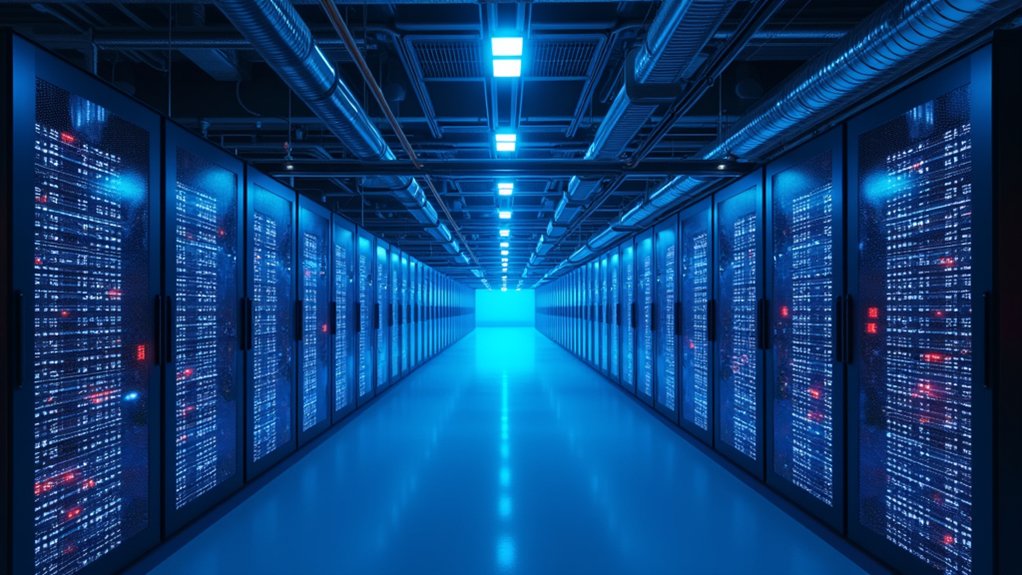While tech enthusiasts celebrate the dawn of advanced AI tools transforming our daily lives, a less glamorous reality looms on the horizon: these systems are energy hogs. According to recent projections, data centers supporting our AI addiction will more than double their electricity consumption by 2030. Let that sink in. More power than the entire country of Japan. Not exactly the green revolution we’ve been promised.
The numbers are staggering. AI-optimized data centers alone will quadruple their energy demands within the decade. In the U.S., these digital powerhouses will drive nearly half of all new electricity demand growth. That’s right – our chat companions and image generators might soon consume more energy than producing aluminum, steel, cement, and chemicals combined. Progress?
AI’s appetite is insatiable—soon demanding more electricity than our entire industrial backbone. Call that evolution?
It gets worse. Some experts predict AI could gobble up to 21% of global energy consumption by 2030. Models like GPT-4 aren’t just getting smarter – they’re getting hungrier, exponentially increasing power needs with each new version. Water consumption at these facilities is skyrocketing too. Apparently, keeping servers cool requires small lakes. Since 2017, data center energy consumption has grown at a staggering 12% annual rate, far outpacing overall global electricity demand.
There’s a silver lining, though. The same AI driving this energy crisis might help solve it. If deployed intelligently across energy sectors, AI could cut costs, boost efficiency, and reduce emissions. The potential emissions reductions might even outweigh the increases from data centers. The growing reliance on these technologies also raises serious energy security concerns as cyberattacks targeting utilities have tripled in recent years. Ironic, isn’t it?
Economically, this surge creates both challenges and opportunities. Data centers will represent over 20% of electricity demand growth in advanced economies. For the U.S., this means a dramatic shift in how energy gets used – less for traditional manufacturing, more for processing ones and zeros.
The solution? More efficient hardware, better data management, and renewable energy sources for data centers. Organizations that pair sustainability with cost-saving measures will come out ahead. The rest? They’ll be left explaining why their brilliant AI systems require their own power plants. Not exactly the future we imagined, but here we are. Progress comes with a price tag – and this one’s measured in kilowatt-hours.
